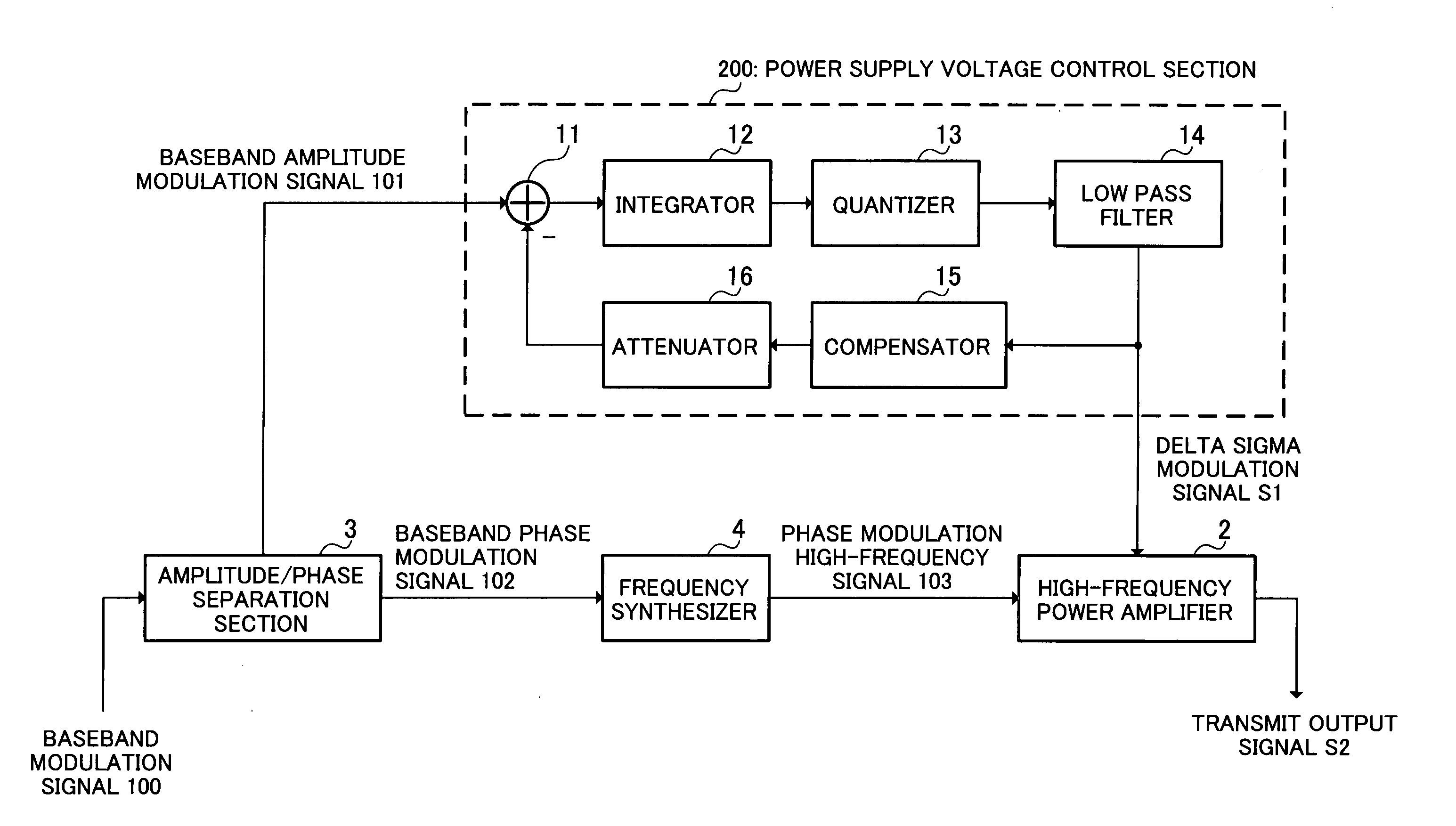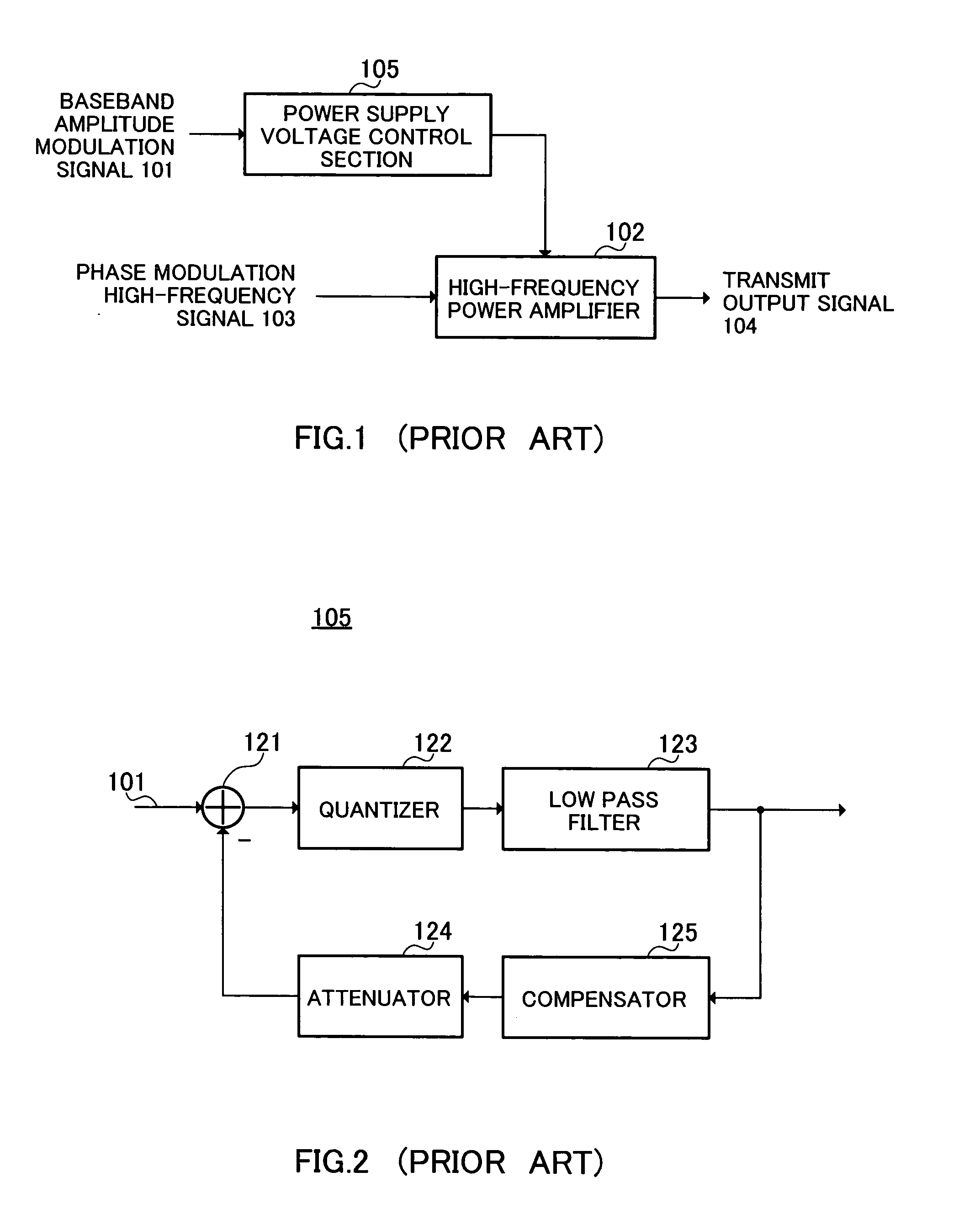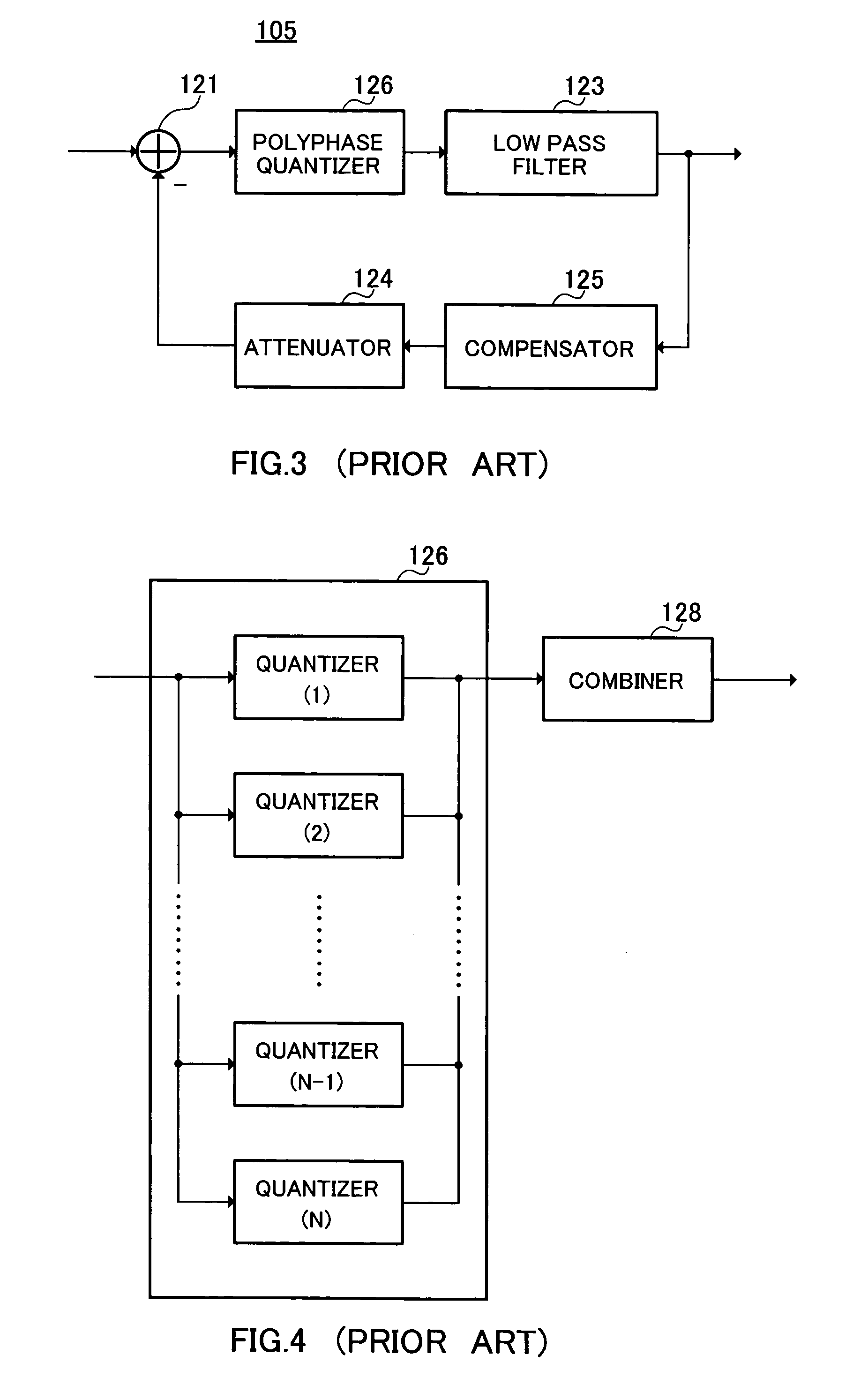Amplifier apparatus
a technology of amplifiers and amplifiers, applied in the field of amplifiers, can solve the problems of difficult to provide a fixed voltage, difficult to share the control section of supply voltage with a modulation, and the distortion of the intermodulation of the transmit output signal, so as to eliminate quantization noise and reduce the distortion of the output of high-frequency power amplification
- Summary
- Abstract
- Description
- Claims
- Application Information
AI Technical Summary
Benefits of technology
Problems solved by technology
Method used
Image
Examples
first embodiment
[0033]FIG. 7 is a block diagram showing the configuration of a linear transmission modulator according to a first embodiment of the present invention.
[0034] A linear transmission modulator of this embodiment has an amplitude / phase separation section 3 that separates a baseband modulation signal 100 into a baseband amplitude modulation signal 101 comprising an amplitude modulation component (for example, √I2+Q2) and a baseband phase modulation signal 102 comprising a phase modulation component (for example, the angle formed by a modulated symbol and the I-axis), a frequency synthesizer 4 that performs phase modulation of a high-frequency signal by means of baseband phase modulation signal 102 and converts this signal to a phase modulation high-frequency signal 103, a nonlinear high-frequency power amplifier 2 that amplifies frequency synthesizer 4 output phase modulation high-frequency signal 103, and a power supply voltage control section 200 that forms a control signal (in the cas...
second embodiment
[0041]FIG. 8, in which parts corresponding to those in FIG. 7 are assigned the same codes as in FIG. 7, shows the configuration of a power supply voltage control section according to a second embodiment of the present invention. Power supply voltage control section 300 of this embodiment basically has a delta sigma modulator configuration as in the first embodiment, but its configuration differs partially from that of the first embodiment.
[0042] In power supply voltage control section 300, compensator 15 is located between adder 11 and integrator 12 rather than in the feedback loop, the output of adder 11 undergoes compensation by compensator 15, and the output of compensator 15 is integrated by integrator 12. The rest of the configuration is the same as in the first embodiment.
[0043] Generally, as the circuit scale of a negative feedback loop increases, the path by which a signal is fed back becomes longer, and the circuit may become unstable due to the occurrence of oscillation ...
third embodiment
[0046]FIG. 9, in which parts corresponding to those in FIG. 7 are assigned the same codes as in FIG. 7, shows the configuration of a power supply voltage control section according to a third embodiment of the present invention. Power supply voltage control section 400 of this embodiment basically has a delta sigma modulator configuration as in the first embodiment, but its configuration differs partially from that of the first embodiment.
[0047] In power supply voltage control section 400 an envelope detector 17 is provided, and instead of the output of low pass filter 14 being fed back as shown in the first embodiment in FIG. 7, a baseband amplitude modulation signal is extracted by envelope detector 17 from transmit output signal S2 output from high-frequency power amplifier 2, and this is fed back to adder 11 via compensator 15 and attenuator 16. The rest of the configuration is the same as in the first embodiment.
[0048] According to the third embodiment, by means of a delta sig...
PUM
 Login to View More
Login to View More Abstract
Description
Claims
Application Information
 Login to View More
Login to View More - R&D
- Intellectual Property
- Life Sciences
- Materials
- Tech Scout
- Unparalleled Data Quality
- Higher Quality Content
- 60% Fewer Hallucinations
Browse by: Latest US Patents, China's latest patents, Technical Efficacy Thesaurus, Application Domain, Technology Topic, Popular Technical Reports.
© 2025 PatSnap. All rights reserved.Legal|Privacy policy|Modern Slavery Act Transparency Statement|Sitemap|About US| Contact US: help@patsnap.com



